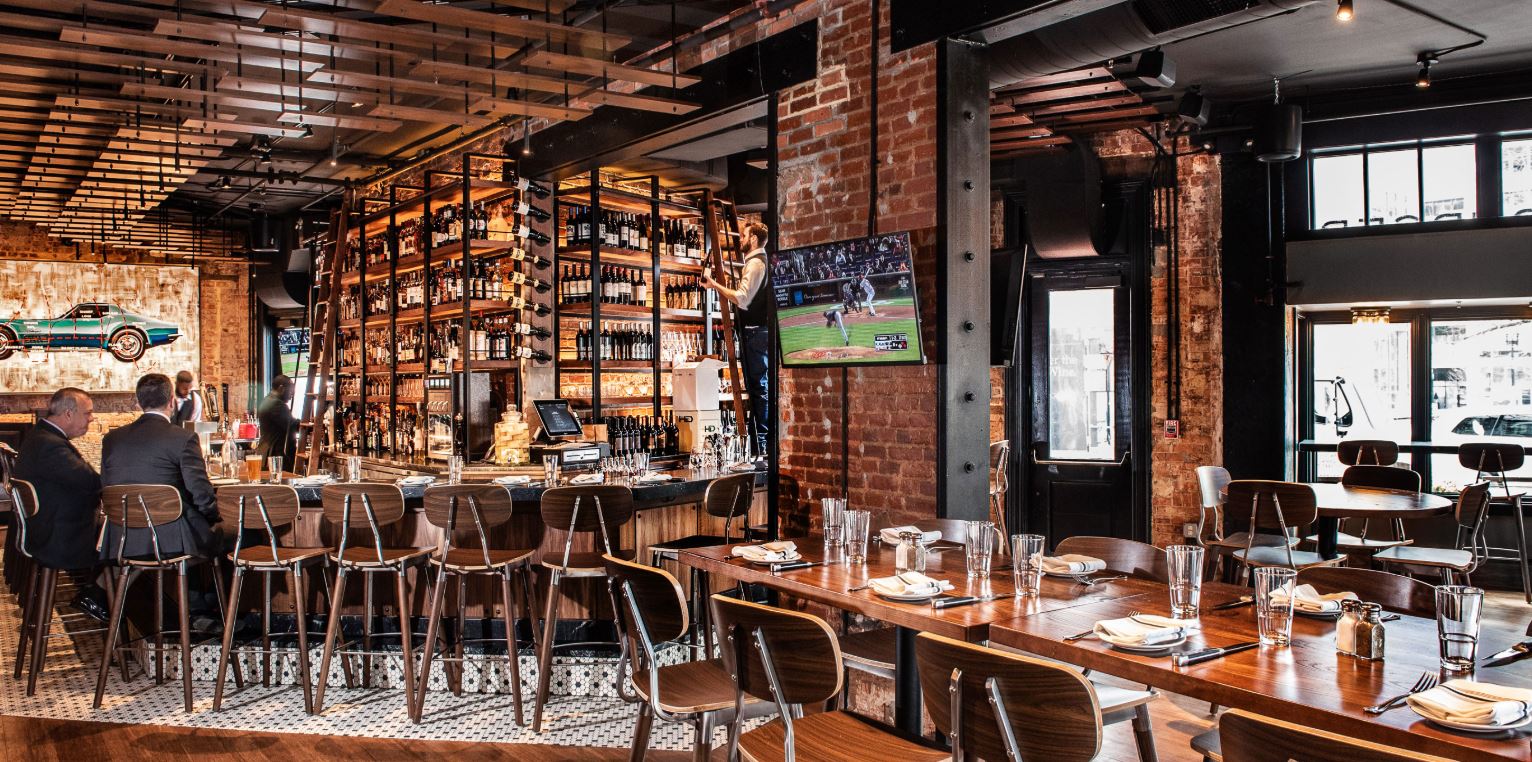Asian Restaurant ISB: A Must-Try Spot for Food Lovers in Islamabad
Asian Restaurant ISB: A Must-Try Spot for Food Lovers in Islamabad
Blog Article
Savor Genuine Asian Food With a Pan-Asian Twist for a Culinary Adventure
Getting started on a culinary journey through genuine Eastern cuisine, improved with a Pan-Asian spin, provides a distinct possibility to check out the abundant tapestry of flavors that define the area's varied cooking traditions. This experience invites you to appreciate the exquisite balance of preferences-- pleasant, salted, spicy, and sour-- integrated by fragrant natural herbs and spices. Envision the cutting-edge fusion of Thai curry and ramen or the unexpected pleasure of sushi burritos. As you contemplate these enticing recipes, think about the cultural stories and historical influences that shape them, each bite using a story waiting to be discovered.

Exploring Pan-Asian Tastes
In the world of worldwide gastronomy, Pan-Asian food attracts attention for its exceptional diversity and the unified interaction of tastes from various Asian societies. This cooking method commemorates the special ingredients and rich practices discovered throughout the continent, developing a tapestry of preferences that is both gratifying and intriguing. Trick to Pan-Asian cuisine is its ability to stabilize contrasting flavors-- sweet, salty, spicy, and sour-- while highlighting the freshness and quality of each ingredient.
From the umami-rich soy sauce of Japan to the intense chili peppers of Thailand, Pan-Asian cuisine offers a comprehensive scheme of flavors. These aspects are often integrated in creative ways, boosting dishes with layers of complexity. As an example, using fragrant natural herbs such as lemongrass and cilantro, usual in Vietnamese and Thai cuisine, includes a revitalizing illumination to recipes, while the incorporation of coconut milk provides a velvety, rich texture.
The emphasis on fresh produce and fragrant seasonings guarantees that each meal is not just a feast for the taste yet likewise for the senses. Pan-Asian cuisine welcomes restaurants to start a cooking journey, checking out the substantial and differed landscapes of Eastern gastronomy with every bite.
Combination Recipes to Attempt
While Pan-Asian food is commemorated for its standard tastes, the contemporary cooking landscape is increasingly embracing fusion recipes that mix these traditional elements with influences from various other regions. This ingenious strategy not only honors the abundant heritage of Oriental cookeries but also introduces novel taste experiences that interest contemporary tastes.
An archetype of such a fusion dish is the Korean-Mexican taco, where seasoned bulgogi beef is wrapped in a warm tortilla, covered with kimchi and a hot gochujang-infused salsa. This combination marries the bold, full-flavored flavors of Korea with the lively, fresh components of Mexican food. Likewise, sushi burritos have gotten popularity, integrating the delicate virtuosity of Japanese sushi with the hearty, hand-held benefit of a burrito, often including blend ingredients like tempura shrimp and avocado with a drizzle of wasabi mayo.
Another significant meal is Thai curry ramen, which instills the creamy, aromatic flavors of Thai curry right into the comforting brew of standard Japanese ramen, producing a harmonious mix that entices the senses. These combination recipes prolong past plain novelty; they stand for a cooking dialogue in between cultures, encouraging exploration and advancement worldwide of Pan-Asian cuisine.
Vital Active Ingredients and Seasonings
To absolutely value Pan-Asian food, one have to comprehend the vital active ingredients and flavors that develop its foundation. This diverse culinary style draws from a rich tapestry of Eastern traditions, utilizing an unified mix of structures and flavors. Trick ingredients consist of soy sauce, fish sauce, and oyster sauce, which pass on a savory umami deepness vital to Asian dishes. Complementary to these are rice vinegar and mirin, providing a delicate level of acidity and sweet taste.
Fragrant components are essential, with lemongrass, garlic, and ginger being common throughout different Pan-Asian dishes. These components offer an aromatic base that enhances the complexity of flavors. Flavors such as celebrity anise, cardamom, and cinnamon introduce heat and personality, echoing impacts from regions like China and India.

Food Preparation Techniques and Tips
Understanding the art of Pan-Asian cuisine requires knowledge with its unique cooking methods, each adding to the lively tapestry of flavors this culinary practice is celebrated for. Central to these approaches is the stir-fry, a quick cooking method that preserves the dietary honesty and brilliant shades of ingredients. Using a wok, the stir-fry technique enables also warm distribution, essential for attaining the characteristic structure and taste equilibrium of Pan-Asian dishes.
An additional basic strategy is steaming, particularly prevalent in Chinese food. This mild approach keeps the natural flavors and nutrients of components, making it ideal for fish and shellfish and veggies. Dumplings, a precious staple, typically gain from steaming, resulting in soft, succulent appearances.
Cooking, likewise indispensable, passes on smoky depths to dishes such as Korean bulgogi or Japanese yakitori (pan asian dining Islamabad). This strategy often involves marinading active ingredients, permitting tastes to permeate deeply prior to food preparation over an open flame or warm plate
Lastly, grasping the art of stabilizing flavors-- pleasant, sour, salted, bitter, and umami-- is essential. Properly layering these aspects can elevate a recipe from regular to remarkable, providing a complicated and satisfying cooking experience that embodies the significance of Pan-Asian cuisine.
Dining Experiences Worldwide
Around the world, Pan-Asian cuisine provides an unmatched eating experience, celebrated for its abundant tapestry of flavors and vivid discussions. This cooking phenomenon has transcended cultural boundaries, catching the hearts and tastes buds of food enthusiasts worldwide. In worldwide cities you can check here like New York, London, and Sydney, Pan-Asian restaurants serve as fusions where culinary customs from Thailand, Japan, China, and past merge, offering restaurants with a diverse mix of dishes that highlight the area's variety.
The global charm of Pan-Asian food hinges on its capability to offer both credibility and innovation. Chefs masterfully marry conventional ingredients such as lemongrass, soy sauce, and miso with modern strategies, resulting in dishes that are both familiar and refreshingly new. This fusion enables diners to get started on a cooking journey that appreciates heritage while embracing modernity.
Additionally, eating experiences are raised via attentively created environments that mirror the values of Pan-Asian visual appeals. From minimal Japanese-inspired insides to vivid Thai-themed rooms, each restaurant supplies a special ambiance that enhances the culinary offerings. Therefore, customers are not merely eating a meal however partaking in a cultural experience, making Pan-Asian dining an absolutely global phenomenon.
Verdict
The expedition of Pan-Asian cuisine uses an extensive understanding of the elaborate interaction of flavors and cooking practices across Asia. By welcoming blend dishes such as Thai curry ramen and sushi burritos, the cooking journey not only highlights the versatility of traditional active ingredients however likewise showcases innovative contemporary strategies. This gastronomic adventure, enhanced by cooking techniques and necessary spices, provides a distinct chance to appreciate the multiculturalism and culinary artistry that specify Pan-Asian food on a worldwide scale.
Embarking on a culinary journey through genuine Oriental food, enhanced with a Pan-Asian spin, offers a distinct chance to explore the rich tapestry of tastes that define the region's varied culinary customs.In the world of global gastronomy, Pan-Asian cuisine stands out for its impressive variety and the unified interplay of tastes from different Asian cultures. Trick to Pan-Asian food is its capacity to stabilize different flavors-- sweet, salted, spicy, and sour-- while highlighting the freshness and quality of each active ingredient.

Report this page